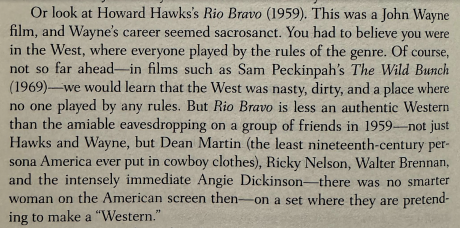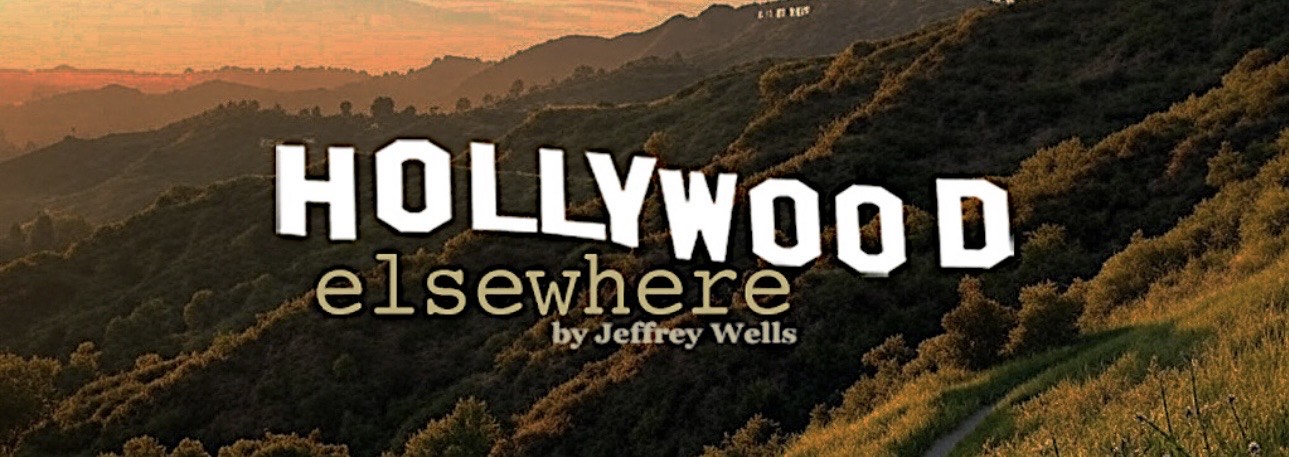Since the ’50s and more particularly the advent of ironic, put-on cinema (which arguably began with John Huston‘s Beat The Devil), there have been two kinds of movies — (1) the just-described kind in which the viewer is repeatedly told that they’re watching a half-serious, half-goof-off enterprise “in quotes”…some kind of dry jape or half-real fantasy or alternate world wank-off that sophistos can certainly enjoy (we hope you do!) but which you’re not really expected to “believe” in, and (2) classically immersive stories that have been constructed and sold as “realism” within the usual cinematic boundaries.
Quentin Tarantino, Edgar Wright, Michael Bay, the Russo Brothers and a whole battalion of like-minded filmmakers have never made a classically immersive movie in their lives, and they never will.
But throughout much of the 20th Century immersive realism was, for the most part, scrupulously adhered to up and down the line. With the exceptions, of course, of surreal fantasies (Disney, Alexander Korda, Michael Powell, Luis Bunuel) and animated features and adventure films with occasional applications of Hal Roach-styled physical humor (George Stevens‘ Gunga Din), it was the only game in town.
I’ve always responded more to immersive cinema than to jape movies, but I’m wondering what the general preference may be these days among movie fans.
When I sit down with a film I’m ready for whatever (really), but in my heart of hearts I mostly want to submit to a world that reminds me in a thousand different ways of the world that (I know this makes me sound old-fogeyish) actually exists outside the theatre doors, the one that I live and struggle in on a daily basis. Or at least a film that strongly echoes that world.
Which is why I’ve always tended to have a problem with films that defy basic rules or natural law to such a degree that it’s impossible to sink into them. (Even if they’re fantasies.)
I’m talking about superhero bullshit, of course, and family-friendly animation and supposedly realistic dramas or dramedies that are written with a tone of such ludicrousness that the characters don’t behave in any sort of semi-logical, reality-based manner, and especially robo-action films in which guys crash through windows, fall three or four stories, land on pavement, loudly groan but nonetheless get up, shake themselves off and run off to the next adventure.
It’s funny to consider that in 1946 Howard Hawks made one of the greatest immersive, super-realistic adventure films ever (i.e., Red River) and yet a mere 13 years later had completely tipped over into the realm of self-acknowledged fake-itude with 1959’s Rio Bravo, which basically said to audiences, “Okay, guys, it’s chill time…which means, of course, that you’re watching a laid-back movie and that we’re conversing with the aid of obviously scripted dialogue and also taking an occasional time-out for a musical number.”
Hawks went back to realism with Hatari! (’62) but went completely crazy with the sound-stage, wank-western aesthetic when he made El Dorado (’66) and Rio Lobo (’70).
From David Thomson‘s “The Big Screen: The Story of the Movies,” page 318:

